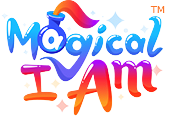The Interrupt Dynamic: Interruption Derails Focus and Reading

Internalizing the World
Children first learn about the concrete world by all that can be physically sensed. Their senses are excited in their body and experience registers in their brain. Inside their brain and body, the child integrates all the connections they make to what they are feeling. The passion of this excitement drives them towards expressing their experience -- this is the creative process of life and learning.
A child first learns to make sense of their world by way of their actual sensory experiences. Later they can expand their learning dimensions so that they can make sense of an abstract idea, word, or symbol – AKA, reading. Their ability to imagine (create imagery) develops their ability to think. All thinking begins with internal imagery. Interruptions can distract a child from processing and imagining.
Effect of Interruptions on Reading – Research:
“Interruptions Disrupt Reading Comprehension”; Cyrus K. Foroughi, Nicole E. Werner, Daniela Barragán, and Deborah A. Boehm-Davis George Mason University.
The data suggests that the time it takes to process the information needed to successfully comprehend text when reading is greater than that required for recognition of text. Any interference (e.g., an interruption) that occurs during the comprehension process may disrupt reading comprehension. This evidence supports the need for transient activation of information in working memory for successful text comprehension and does not support LT-WM theory. (LT = long term memory; WM = working memory.]
“The Effects of Interruptions on Task Performance, Annoyance, and Anxiety in the User Interface.” Brian P. Bailey, Joseph A. Konstan, and John V. Carlis
The results demonstrate that an interruption has a disruptive effect on both a user’s task performance and emotional state, and that the degree of disruption depends on the user’s mental load at the point of interruption. We discuss the implications of these results in terms of building a system to better coordinate interactions between the user and applications competing for that user’s attention. https://www.cse.unr.edu/~sushil/class/ps/papers/EffectInterruptions-interact-2001.pdf
The Interrupt Dynamic
For decades, I have given talks about the gifts of dyslexia and the negatives associated with dyslexia. However, for the most part, parents and teachers remain on the outside looking in, trying to understand what is going on with their loved ones or students. Then in 2011, this concept of the Interrupt Dynamic evolved while helping coaches, tutors, parents, and teachers to identify with what it feels like to be dyslexic and not want to read.
By Bill Allen, Founder of Magical I Am, Inc.
The Interrupt Dynamic & Reading Disability Symptoms:
Both 3-D, dyslexic learner parents and Special Ed Instructors in this country find that the most common Interrupt Symptoms of a Reading Disability are:
hesitate, insert word, omit word, replace word, misread a word, skip line(s), miss a punctuation stop or combination thereof while reading, silently or out loud.
What people may not understand is that for the 3-D learner, every time one of the above symptoms happens, it's perceived as an interruption. So, think about it. If you are trying to communicate something significant and are interrupted four times in less than 90 seconds, how does this make you feel? The feeling immediately evoked is frustration, then anger, and quickly evolves to having your focus distracted from what you want to communicate.
For the motivated 3-D learner, being interrupted while reading progresses over time from “I am interested” to “frustration” to “anger” to “I don't care” to “I don't want to read” to “I don't like to read,” and too often to “I hate to read.”
The answer for 3-D learners that exhibit these reading disability symptoms is so simple: develop the 3-D mastery of the most used 300 abstract words and abstract symbols that stimulate over 90% of the reading disability symptoms that occur when read silently or aloud. Reduction of the main interrupters in reading, and the mastery of abstract words, punctuation, and symbols will be consistently achieved while completing Sky Village – Trail of Spells.
